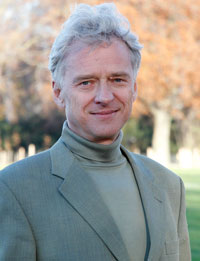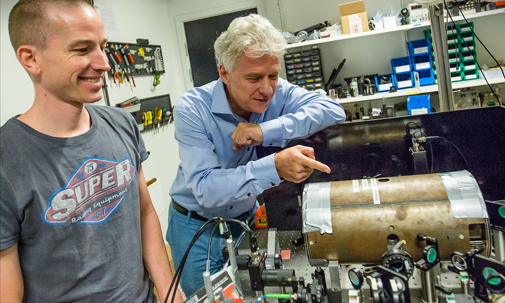Eugene Polzik receives ERC grant
Eugene Polzik, professor and head of the Center for Quantum Optics, Quantop at the Niels Bohr Institute at the University of Copenhagen has received a grant of nearly 1.2 million kroner (150,000 Euro) from the European Research Council, ERC for the project ‘Quantum Optical Magnetometer for Medical Applications’.

Eugene Polzik, professor and head of Quantop at the Niels Bohr Institute has received an ERC grant of nearly 1.2 million kroner for the project ‘Quantum Optical Magnetometer for Medical Applications’. The ERC grant is a Proof of Concept supplemental grant for the large ERC Advanced Grant of 18 million kroner that Eugene Polzik received in October 2011.
The ERC grant is a Proof of Concept supplemental grant to the large ERC Advanced Grant of 18 million kroner that Eugene Polzik received in October 2011. The purpose of this new grant is to develop practical applications from the research completed with the ERC Advanced Grant.
The project involves researching the sensitive measurement of tiny magnetic fields. There are ultra-small magnetic fields in the human body that are associated, for example, with nerve signals and they could be important for medical diagnostics.
Laboratory experiments
The magnetic fields are formed on the atomic level. Atoms do not stand still, they rotate around themselves and the axis is like a tiny magnetic rod. But the axis has a slight tilt and as a result, the magnetic rod swings in circles. In order to measure a swinging object, you need both its position and the speed of the oscillation.
According to the laws of quantum physics, it is not possible to measure the speed and position simultaneously and get a precise number, but researchers at Quantop have developed a method to almost get around the limitations of quantum physics and thus achieve very precise measurements of ultra-small magnetic fields.

The work to develop a practical quantum optical magnetometer for biomedical use will be carried out by postdoc Kasper Jensen (left) in Quantop’s laboratories at the Niels Bohr Institute.
From the laboratory to reality
Such ultra-small magnetic fields are found throughout the human body and doctors would like to be able to measure them accurately to diagnose various diseases.
“With our supplemental grant we will now be able to work on developing measuring equipment for medical tests. These include a wide range of eye diseases, such as glaucoma, where you can make a diagnosis by measuring the magnetic field. With our method, we are endeavouring to develop a device that is so sensitive that you do not need to place electrodes on the eye like you do today,” explains Eugene Polzik.
He explains that the method could be used to make many other diagnoses. This could include Alzheimer’s, where you measure the electrical signals in certain nerve pathways or you can measure the heartbeat of tiny foetuses, which is usually difficult because of the fat layer of the foetus and its location deep in the mother’s abdomen. It would also make it easier to measure seizures.
The work to develop a practical quantum optical magnetometer for biomedical use will be carried out by Kasper Jensen, postdoc in Quantop. The research will be done in collaboration with doctors at Rigshospitalet and Glostrup Hospital and biophysicists at the Niels Bohr Institute.

Eugene Polzik, professor and head of the Center for Quantum Optics, Quantop at the Niels Bohr Institute at the University of Copenhagen, +45 3532-5424, polzik@nbi.dk
Kasper Jensen, postdoc, Center for Quantum Optics, Quantop at the Niels Bohr Institute at the University of Copenhagen, +45 3026-3149, kjensen@nbi.ku.dk
